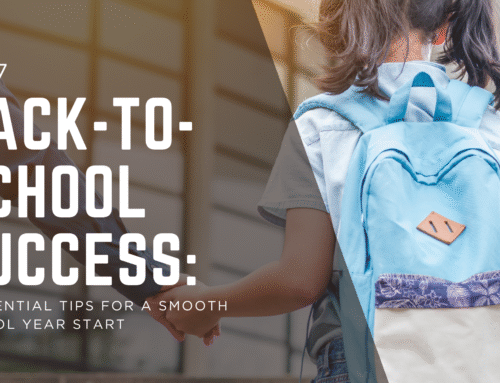
Starting the school year doesn’t have to mean chaos and stress. These 30 practical organization strategies will help your family transition smoothly into the academic routine while maintaining peace and productivity throughout the school year.
📅 Pro Tip
Implement these strategies gradually over the two weeks before school starts. Trying to do everything at once can overwhelm both parents and children.
Essential Back-to-School Organization Strategies
1. Sleep and Routine Management
Establishing consistent routines is foundational for academic success and family harmony.
😴 Sleep Routine Essentials
- Set your child’s sleep schedule back to “School Time” two weeks before the first day
- Set and enforce regular weekday and weekend bedtimes
- Set an alarm or notification 30 minutes before bedtime
- Remove all electronic items from bedrooms to focus on sleeping
2. Technology and Screen Time Management
Creating clear boundaries around technology use supports academic focus and family connection.
- Resume rules about screen time for the school year
- Clearly define what’s allowed and when for TV and tablets
- Establish “Family Time” during dinner or before bed
- Remove distractions like TVs and tablets from homework areas
3. Homework and Study Systems
Effective study habits begin with proper structure and environment.
📚 Homework Success Strategies
- Use a timer to get children used to focusing for specific periods
- Teach children to prioritize assignments by making to-do lists with deadlines
- Set a regular alarm each day that signals the start of homework time
- Give children short breaks after each completed assignment
- Schedule study blocks on weekends and before tests
4. Preparation and Organization Systems
Reduce morning chaos through evening preparation and smart organization.
Evening Preparation Routine:
- Encourage children to lay out school clothes the night before
- Have children pack their school bags before going to sleep
- Create an inbox for permission slips and parent attention items
- Keep a small emergency allowance in bags for unexpected needs
🛍️ Supply Organization Tips
- Inventory last year’s school supplies before buying more
- Include children in back-to-school shopping by letting them choose items
- Create a dedicated space to store school supplies
- Re-label butter tubs to organize pens, markers, and post-its
Advanced Organization Strategies
5. Space and Environment Optimization
Designated spaces create mental clarity and reduce transition times.
- Establish a specific space as the official “homework area”
- Remove distractions from homework areas
- Map out a bathroom schedule to avoid morning conflicts
- Create dedicated storage for different types of school materials
6. Social and Emotional Preparation
Supporting children’s social needs reduces stress and builds confidence.
👥 Social Connection Strategies
- Discuss what children can expect on the first day to build preparedness
- Arrange outings with friends to rebuild social ties before school starts
- Establish blocks of fun time through sports or friend visits
- Plan a mid-term fun activity to maintain motivation
7. Goal Setting and Motivation Systems
Clear goals and recognition systems maintain enthusiasm throughout the year.
- Have children set realistic goals for the new school year
- Encourage reading goals like 10 non-school books
- Create a reward system for meeting goals and helping around the house
- Use extra TV time or other privileges as positive reinforcement
Proactive Communication and Planning
8. Time Management Mastery
Strategic timing prevents rushing and reduces family stress.
⏰ Time Management Hacks
- Set your clocks forward 10 minutes to build in buffer time
- Establish consistent timing for homework, meals, and bedtime
- Use visual timers for younger children to understand time passage
- Create family calendars with color coding for each member
9. Academic Support and Monitoring
Early intervention prevents small issues from becoming major problems.
- Touch base with teachers early to troubleshoot potential issues
- Monitor homework completion without micromanaging
- Check the parent inbox daily for school communications
- Maintain open communication about academic challenges
Implementing Your Organization System
Start Small and Build Consistency
Choose 3-5 strategies to implement first, then gradually add more as routines become established. Remember that consistency matters more than perfection.
🎯 Implementation Strategy
Focus on one category at a time. Begin with sleep routines and morning preparation, then gradually introduce homework systems and goal setting. This phased approach prevents overwhelm and builds sustainable habits.
The Payoff: A Calm, Organized School Year
With these comprehensive preparation strategies, your children will begin the school year feeling confident and organized. More importantly, you’ll maintain your sanity while supporting their academic success. The initial investment in establishing these systems pays dividends throughout the entire school year.
Ready for a Stress-Free School Year
By implementing these 30 organization strategies, you’re not just preparing for the first day of school—you’re establishing systems that will support your family’s success all year long. The result: relaxed parents, excited children, and a home environment that supports both academic achievement and family harmony.
“A wealthy person is simply someone who has learned how to make money when they’re not working.” – Robert Kiyosaki







